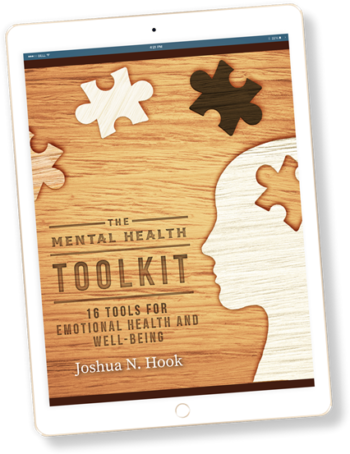Humility, Growth, and Emotional Well-Being
March 9, 2018
This post is Part 8 in a 12-part blog series on humility and growth. (If you missed the first post, you can find it here.)
In this post, I will explore how the model of humility and growth can be applied to our emotional health and well-being. Mental health can be a difficult thing. When there’s a major mental health problem, it’s an emergency and everything stops. Maybe this has happened to you or someone you love. Maybe you have experienced the pain of severe depression, a debilitating fear, or a psychotic break. You know how important emotional well-being can be.
But even if you haven’t had a major problem with your mental health, we all struggle to some extent. None of us is perfectly balanced or healthy. You might struggle with anxiety, and wish your mind was more peaceful and at rest. Or you might struggle with sadness or depression, and wish you felt a bit happier and upbeat. How can humility help us make changes in our emotional well-being?
Humility and Emotional Well-Being
- Take responsibility for your problem. I want to be careful about this first point, because often the actual root cause of our mental health problems is not our fault. I especially want to be clear about this point for any readers who have experienced abuse. The abuse was not your fault. (If you are currently in an abusive situation, get outside help immediately to help you get to a safe place.) Also, people can have chemical imbalances in their brain, or difficult family upbringings that contribute to mental health problems. These root causes are not your fault either. It doesn’t do any good to blame yourself for things that happened to you that were outside of your control. However, the responsibility for dealing with our mental health problems now lies inside us. Even if the root cause of our problem was outside of us, it doesn’t usually help us to focus on that, or blame others for our problems. Your life is being lived right now, in the present. Dealing with our mental health issues is our responsibility. The buck stops with us.
- The weakness finder. When it comes to our emotional health and well-being, it’s important to be humble and take a ruthless inventory of our weaknesses and limitations. What gets in the way of our peace and well-being? What stops us from living the life we want? When the stress in our life builds, how does this show up emotionally for us? Honestly acknowledge and admit your struggles and limitations.
- Get a coach. We have more resources than ever to help us with our emotional health and well-being. But in our society today, there is stigma associated with seeing a therapist or counselor. Some people think that only “crazy people” go to see a psychologist. This stigma is damaging and unhelpful. Each of us is on a continuum when it comes to our mental health and well-being. Each of us is partly healthy and partly unhealthy. It’s okay to find someone to help us with this process. I decided to see a therapist several years ago, and it was one of the best decisions of my life. Don’t go at this alone. Seek out a therapist or counselor to help you in your journey toward emotional health and well-being.
- Feedback, feedback, feedback. One of the benefits of meeting regularly with a therapist is that you can have consistent feedback on your limitations and struggles. Often in our lives, we don’t get accurate feedback about our mental health and well-being. The main reason for this is that we aren’t open and honest about our deepest emotional problems and struggles. Because we keep this part of our lives hidden, we don’t open ourselves up for feedback. We stay locked up in a prison in our mind, not making any progress. Instead, open yourself up to feedback. Check out what you are thinking and feeling with a counselor or trusted confidant. Run it by someone. Give others permission to speak truth into your life.
- Work at the edges of your ability. In order to grow and change, you need to spend time at the edges of your ability, outside of where you are comfortable. A great example of this is a therapy technique called systematic desensitization, which is used to conquer fears. Let’s say you are afraid of public speaking. When you start working on this fear, your counselor might have you do a fairly easy task; for example, imagining yourself giving a speech. Then your counselor works with you to relax and calm down while doing this visualization. But once you have mastered that first step, the counselor keeps you moving, staying at the edge of your ability. Maybe the next step is to actually practice giving a speech in front of the mirror, or perhaps with the counselor in the room. Then you give a speech in front of a few friends. Finally, you practice a speech at your local Toastmasters group. Each step involves pushing yourself to the edge of what you are capable of. It’s not a comfortable process, but it works.
Discussion: What is one thing you would like to change about your emotional health and well-being? How could you use these humility principles to help you reach your emotional health goals?
Click here to read Part 9: Humility, Growth, and Close Relationships

Related Thoughts

Subscribe To My Newsletter
Join my mailing list to receive the latest blog posts.
Receive my e-book “The Mental Health Toolkit” for free when you subscribe.





